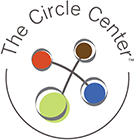Harvard Business Review Bloggers Vijay Govindarajan and Jatin Desai insist these radical times require radical leadership qualities to keep an organization’s “innovation pipeline full.” This edgy blend of decisive and collaborative strategies mixed with ability to make key turns, or “pivots”, when the proverbial writing is on the industry walls- all are signs of the future leader. The article’s mention of “creative discontent” and how truly innovative leaders must work to create cultures that are never fully satisfied with the status quo. Surely the benefits of developing this kind of ever-improving culture are apparent and it takes a wise leader to know when to ease off the gas periodically during times of such constant change, otherwise you just create cultures of discontent and tired contributors. What do these innovative strategies look like on you as a leader and how do you personally cultivate the discernment to know when to push and when to affirm your work force? Radical times and radical leaders call for radical conversations. Let’s discuss…
http://blogs.hbr.org/2013/10/five-power-skills-for-discovering-radical-ideas/
Developing Creative Discontent- What kind of leader are you during these times of amazing change?











